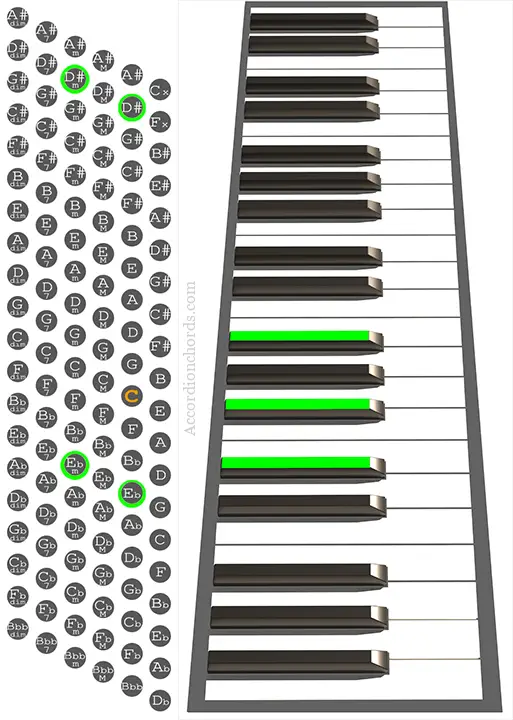AKA: D#–, D#m, D#min, D# minor
D# minor Accordion Chord Chart

Minor Chords
Minor chords are built by taking the root, the 3rd, and the 5th notes of the major scale and then lowering the 3rd by one half-step (a semitone). The formula for a minor chord is R, m3°, 5°. They can also be built by combining a minor 3rd interval with a major 3rd interval.
For example, let’s take the first three notes of the C major scale: C, E, G (root, 3rd, 5th), now subtract an half-step from the 3rd and you get a C minor (C, Eb, G). If we analyze the intervals of this trichord (aka “triad”) we found that between C and Eb there’s a minor 3rd and between Eb and G there’s a major 3rd.
One of the defining characteristics of a minor chord is its minor 3rd interval, which gives the chord its distinctive sound. Compared to a major chord, which has a happy and bright sound, a minor chord sounds sad and serious. This contrast between major and minor chords is an important aspect of music theory and is used by musicians to create a wide range of emotions and moods in their compositions.
Minor Chords on Accordion
The Stradella bass system allows you to play a minor chord by pushing just one button. On a standard bass accordion with at least *24 bass buttons, minor chords are between major and dominant 7th chords, on the 4th column (or on the 3rd column if your accordion doesn’t have the counter-bass column).
(*On smaller accordions with 8 and 12 bass buttons you can play some minor 7th chords but no minor chords.)

Notes:
D#, F#, A#
Intervals:
R, m3°, 5°
Left hand:
D# + D#m
(E♭ + E♭m)
Fingering:
4 + 2